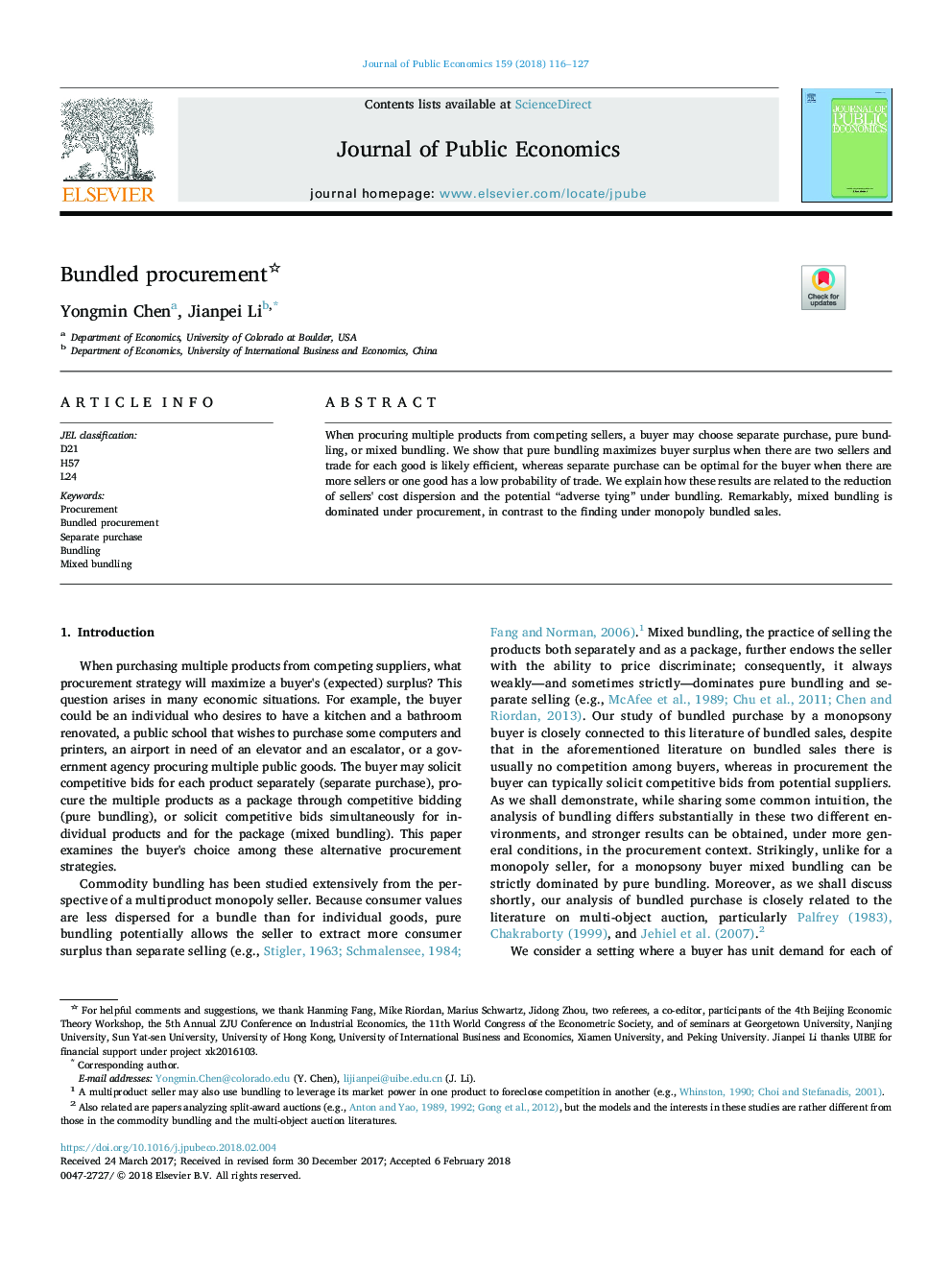| Article ID | Journal | Published Year | Pages | File Type |
|---|---|---|---|---|
| 7369522 | Journal of Public Economics | 2018 | 12 Pages |
Abstract
When procuring multiple products from competing sellers, a buyer may choose separate purchase, pure bundling, or mixed bundling. We show that pure bundling maximizes buyer surplus when there are two sellers and trade for each good is likely efficient, whereas separate purchase can be optimal for the buyer when there are more sellers or one good has a low probability of trade. We explain how these results are related to the reduction of sellers' cost dispersion and the potential “adverse tying” under bundling. Remarkably, mixed bundling is dominated under procurement, in contrast to the finding under monopoly bundled sales.
Related Topics
Social Sciences and Humanities
Economics, Econometrics and Finance
Economics and Econometrics
Authors
Yongmin Chen, Jianpei Li,
